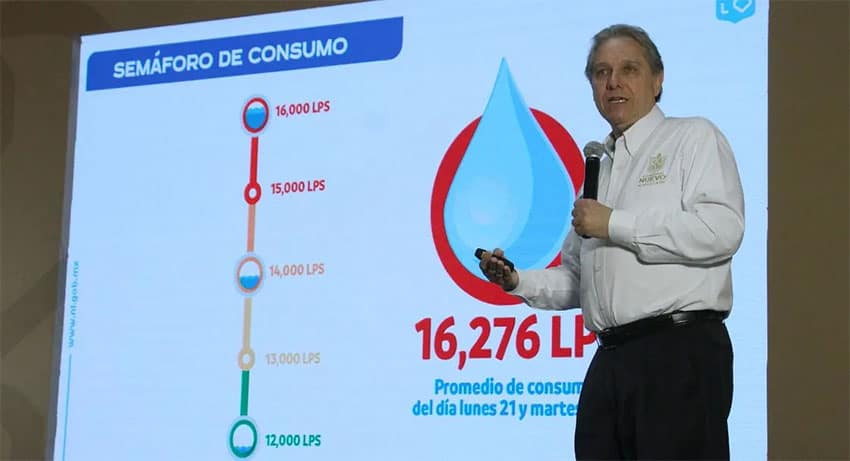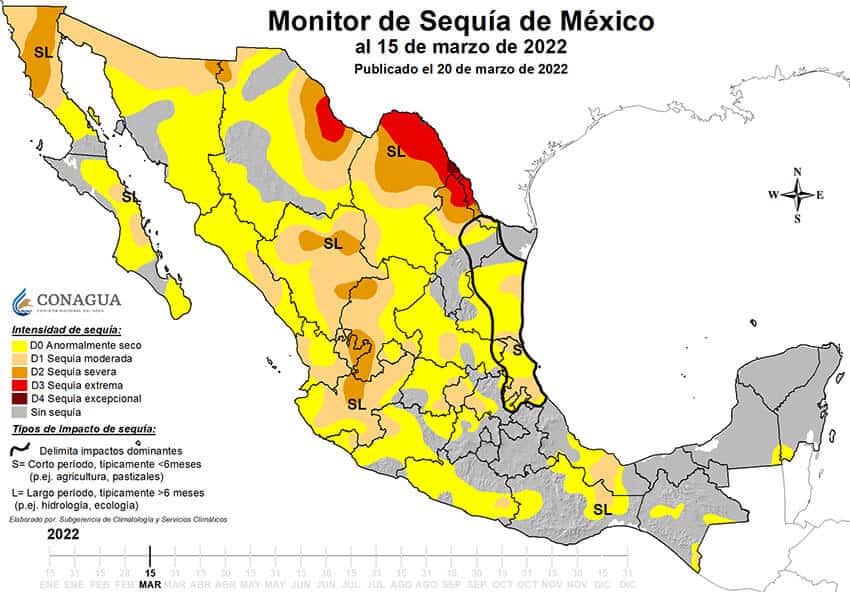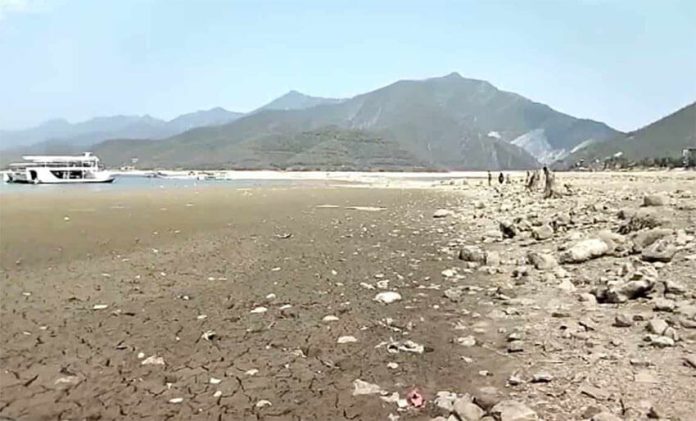The Nuevo León government has introduced water restrictions in the metropolitan area of Monterrey as drought continues to plague the northern border state.
The restrictions, which began Tuesday, apply to seven zones of the metropolitan area, affecting more than 5 million people. Water service will be cut one day a week after 9:00 a.m. in each of the seven zones.
Residents of the municipality of Apodaca, for example, won’t have water on Mondays, while people who live in Santa Catarina will have to do without on Saturdays. No end date for the restrictions has been set.
Details about which municipalities will face cuts on which day are available on a government website.
The government expects to save more than 4,000 liters of water per second thanks to the restrictions, but consumption actually increased on Tuesday “due to panic among the population about being left without water,” said Monterrey water official Juan Ignacio Barragán Villarreal.

Many Nuevo León residents rushed out to buy water tanks, buckets and other vessels when they heard about the restrictions. They took effect at a time when two of the three dams that supply water to Monterrey are virtually empty.
The La Boca dam, which has a capacity of 40 million cubic meters of water, is approximately 15% full, according to the latest report from Monterrey water authorities, while the Cerro Prieto dam, which has a capacity of 300 million cubic meters, is at just 7%.
Barragán, director of Monterrey water utility SADM, told the newspaper El País that the company obtains 25% of its water from those two dams, while the other 75% comes from subterranean sources.
“It’s not a situation of life or death, we still have 75% of our sources, but [the low dam levels] can affect supply,” he said.
While it’s Monterrey households that are affected by the water restrictions, the agriculture industry is the biggest consumer of water in Nuevo León. According to National Water Commission (Conagua) data, it accounts for 65% of water use in the state.
Some companies with operations in the metropolitan area of Monterrey also use significant quantities of water. Ternium México, a mining and steel manufacturing company, has a concession for over 14.6 million cubic meters of water per year, while Cervecería Cuauhtémoc Moctezuma, a brewer, has a concession for almost 7 million cubic meters annually.

The quantity assigned to Ternium is almost twice the volume of Lake Chapala, Mexico’s largest lake.
How Nuevo León’s water is used is under the microscope due to the prolonged drought in the state. Barragán said that a lack of rainfall has been a problem since 2015, and the situation has worsened in recent years.
Precipitation was well below average both last year and in 2020, causing dam water levels to drop to a critical level, he said, noting that levels below 5% would threaten animals that live in the dams.
The severity of the situation prompted the state government to issue an extreme drought declaration in early February, and with no significant rainfall expected until the middle of the year, it had little choice but to impose restrictions.
“The problem is that we are a drought zone but we don’t operate as such,” Rosario Álvarez, director of the environmental organization Pronatura Noreste, told El País. “There are no limits to the quantity of water supplied, there’s no culture of saving water,” she said.
Álvarez questioned why water restrictions don’t extend beyond households, arguing that in a “context of crisis,” they should also apply to industry and agriculture.
Coahuila and Tamaulipas, both of which neighbor Nuevo León, are also badly affected by drought, currently exacerbated by the La Niña weather phenomenon, according to experts cited by the newspaper Reforma.
According to Conagua, 30.4% of Mexico’s territory was experiencing some level of drought on March 15, up from 13.1% a month earlier. The country’s main dams had almost 6 billion fewer cubic meters of water compared to February 15.
Just over one-fifth of Mexico’s almost 2,500 municipalities – 531 – were officially in drought last week, with some of the worst conditions, including those of exceptional and extreme drought, found along the country’s northern border.
With reports from El País, Reforma and El Economista
